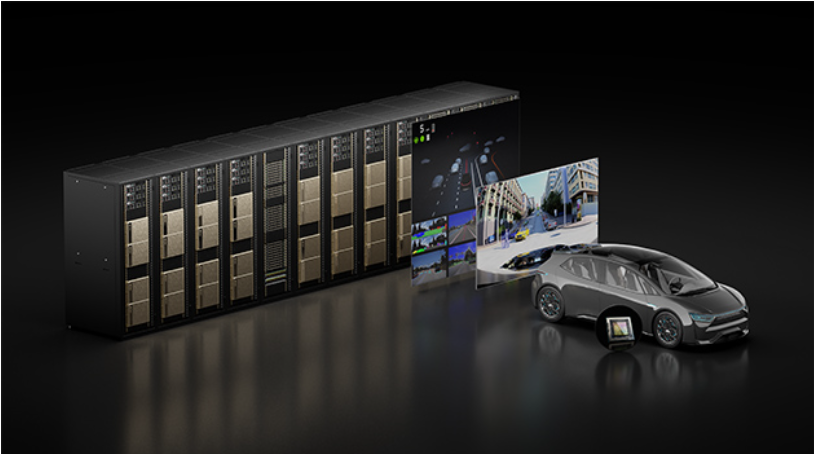Introduction
In 1999, NVIDIA revolutionized computer graphics with the invention of the GPU. This innovation sparked a new era of visual computing, and the company hasn’t stopped there. They’ve since expanded into parallel and mobile computing, powering everything from smartphones to supercomputers and now supercars!
No, Nvidia isn’t building your self-driving car, but they’re providing the brain and nervous system that will make it possible. Their NVIDIA DRIVE platform is a comprehensive solution that tackles the major hurdles of autonomous driving through a combination of hardware, software, and innovative technologies.
Recently announced at GTC 2024, the NVIDIA DRIVE Thor™ centralized car computer, offers unprecedented processing power designed to revolutionize the driving experience. This powerful computer will be used in a wide range of new consumer and commercial vehicles, including electric vehicles, trucks, robotaxis, and autonomous delivery vehicles.
The race to autonomous vehicles is heating up, and at the forefront is Nvidia, a leader in artificial intelligence and computing. Their relentless pursuit of innovation is evident in their patents, which are paving the way for a future filled with self-driving cars.
This article delves into their patent portfolio, exploring how innovative technological solutions are shaping the future of self-driving cars. We’ll examine some of Nvidia’s latest patents and how they address critical challenges, paving the way for safer, more reliable autonomous vehicles on our roads.

Key Insights & Takeaways
Here’s a deeper dive into how Nvidia’s DRIVE platform leverages its patent portfolio to revolutionize autonomous vehicles:
- Seeing the Road Clearly: Object detection is crucial for self-driving cars. Patents like US11906660B2 “Object Detection And Classification Using Lidar Range Images” and US11468582B2 “Leveraging Multidimensional Sensor Data For Computationally Efficient Object Detection” showcase Nvidia’s focus on using various sensors (LiDAR, cameras) to create a comprehensive picture of the environment.
Nvidia Drive AGX Platform

The NVIDIA DRIVE AGX™ platform, powered by the DRIVE OS™ SDK, delivers the highest level of compute performance. This centralized compute and software enables AI-defined vehicles to process large volumes of camera, radar, and lidar sensor data over-the-air and make real-time decisions.
- Safe Navigation and Decision Making: Once objects are detected, the car needs to react accordingly. Patents like US11878682B2 “Path Planning And Control To Account For Position Uncertainty” and US11514293B2 “Future Object Trajectory Predictions” address this by using sensor data and AI to plan safe routes and predict potential hazards.
- Critical Responses for Real-World Scenarios: Emergencies require immediate and proper action. The patent US11816987B2 “Emergency Response Vehicle Detection for Autonomous Driving Applications” highlights Nvidia’s commitment to ensuring self-driving cars can identify and react to emergency vehicles appropriately.
- Building a Trusted Driver: Safety is paramount. Patents like US11550325B2 “Adversarial Scenarios For Safety Testing Of Autonomous Vehicles” show how Nvidia uses simulated worst-case scenarios to rigorously test the safety and reliability of autonomous driving systems.
- Training the AI for the Road Ahead: Training vast amounts of data is essential for autonomous vehicles. The patent US11436484B2 “Training, Testing, And Verifying Autonomous Machines Using Simulated Environments” explores using simulations to create safe and extensive training grounds for self-driving car AI.
These are just a few examples of how Nvidia’s DRIVE platform, backed by their patent portfolio, is shaping the future of autonomous driving. By focusing on perception, safe navigation, critical response, and robust AI development, Nvidia is laying the groundwork for a future where self-driving cars are a safe and reliable reality.
Wait! But if Nvidia is building the brains of the car then who is building the car?
Nvidia’s Strategic Collaborations

With their continuous patent innovation, Nvidia might be laying the groundwork for their own self-driving car someday. However, their current focus on empowering other carmakers might be the stronger strategy. Time will reveal their ultimate direction.
What other companies are filing patents in the Self driving car space? Request a patent landscape around this technology by filling out the form below:




